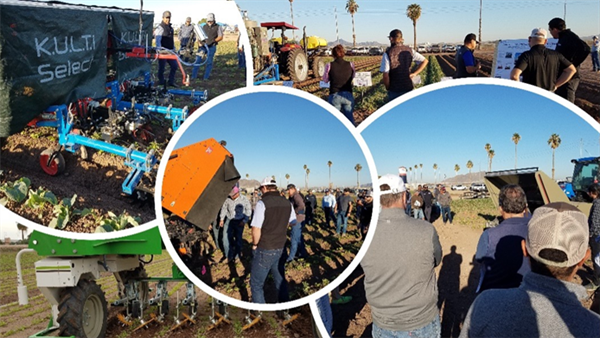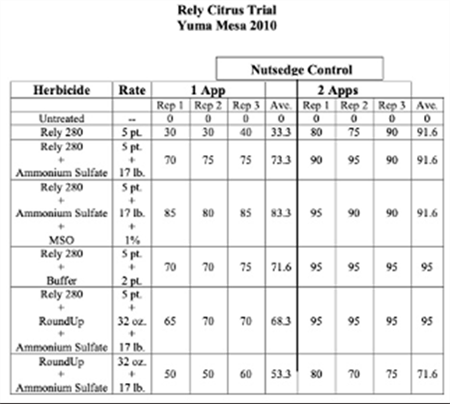
Rapidly changing conditions are a common feature in the agricultural arena. Things are in a constant state of flux in terms of climate, economics, methods of operation, etc. However, in the past few years, principally during the pandemic and post-pandemic times, changing conditions in agriculture for the desert Southwest have been extremely rapid and substantial.
Supply chain issues have been disruptive to many sectors of the economy and that has certainly affected agricultural operations. Things that have commonly been standard or easy things to manage in the past such as the simple need of replacing equipment or parts have become complicated and expensive.
We have become aware of fragile supply chains and the exposure of single points of failure that can have huge domino effects in many facets of our society, including agricultural industries. For example, during the pandemic it cost nearly $40,000 to move a shipping container from Asia to the U.S. and now things are starting to catch up and it has been reported that containers can now be shipped from Asia to the U.S. for less than $3,000.00.
Fertilizer prices for many materials have more than doubled in recent years, primarily due to basic supply and demand pressures. Fertilizer supplies have been subject basic economic pressures and further exacerbated by the war in Ukraine and the associated changes in natural gas supplies.
Fertilizer Supply and Cost
In a recent report from DTN market analysis (Formerly: Telvent DTN, Data Transmission Network) for the second week of November, retail U.S. fertilizer prices were not substantially different than in October but did have some slight variations with five fertilizers showing marginally lower prices than in October and three other key fertilizers tracking slightly higher. It is important to note that DTN designates a “significant” difference in prices with a move of 5% or more.
The five fertilizers that were marginally lower in price included monoammonium phosphate (MAP), potash, urea, 10-34-0, and anhydrous ammonia. Di-ammonium phosphate (DAP), urea ammonium nitrate (UAN)-28, and UAN-32 were slightly higher in price in mid-November, Table 1. Costs per pound of nitrogen (N) is shown for primary N sources in Table 2.
|
MAP |
Potash |
Urea |
10-34-0 |
Anhydrous |
DAP |
UAN-28 |
UAN-32 |
|
$978 |
$848 |
$812 |
$753 |
$1,415 |
$930 |
$584 |
$681 |
Table 1. Mid-November retail prices in U.S. markets for several fertilizers. Source: DTN
|
Anhydrous Ammonia |
UAN-28 |
UAN-32 |
|
$0.88 |
$1.04 |
$1.06 |
Frost and freeze damage affect countless fruit and vegetable growers leading to yield losses and occasionally the loss of the entire crop. Frost damage occurs when the temperature briefly dips below freezing (32°F).With a frost, the water within plant tissue may or may not actually freeze, depending on other conditions. A frost becomes a freeze event when ice forms within and between the cell walls of plant tissue. When this occurs, water expands and can burst cell walls. Symptoms of frost damage on vegetables include brown or blackening of plant tissues, dropping of leaves and flowers, translucent limp leaves, and cracking of the fruit. Symptoms are usually vegetable specific and vary depending on the hardiness of the crop and lowest temperature reached. A lot of times frost injury is followed by secondary infection by bacteria or opportunist fungi confusing with plant disease.
Most susceptible to frost and freezing injury: Asparagus, snap beans, Cucumbers, eggplant, lemons, lettuce, limes, okra, peppers, sweet potato
Moderately susceptible to frost and freezing injury: Broccoli, Carrots, Cauliflower, Celery, Grapefruit, Grapes, Oranges, Parsley, Radish, Spinach, Squash
Least susceptible to frost and freezing injury: Brussels sprouts, Cabbage, Dates, Kale, Kohlrabi, Parsnips, Turnips, Beets
More information:
We are in the process or organizing our 3rd AgTech Field Day. The event will be held Tuesday, October 25th at the University of Arizona’s Yuma Agricultural Center. Like last year, the workshop will feature the latest ag technologies being demoed in the field. I’ve been reaching out to multiple companies but am sure I’m not aware of all the cutting-edge technologies out there. We’d like to showcase as many innovative ag technologies as possible, so please contact me if you are interested in demoing your equipment or know someone that is. It’s an open invitation - private companies, and university and government researchers are all welcome.

Fig. 1. AgTech Field Day (2021).
It is well known that conditions of the environment such as temperature, light, CO2, humidity, and wind at the time of application as well as many other factors impact how herbicides perform. This could vary depending on the weed species, the compound, if the product is soil applied etc.
One of our subscribers asked specifically about Rely herbicide's response to temperature and humidity.
A study showed that plants grown at 90% relative humidity presented more translocation of glufosinate than those grown at 35%. Relative humidity had greater effect than temperature on glufosinate toxicity to Palmer amaranth, redroot pigweed, and common waterhemp (1).
Additional research showed glufosinate acted slower with lower temperatures delaying injury to two weed species, but only small differences in injury existed among temperature regimens in the final evaluations 288 h after spraying. It also suggested that the activity of glufosinate ammonium on both species was significantly reduced by low relative humidity (2).
Barry Tickes at the The University of Arizona conducted a nutsedge trial in 2010 at the Yuma Mesa in which we sprayed Rely in June with similar temperatures to what we are having today and humidity below 20%. Then, a second application was done in August, which averaged ~40% relative humidity. The following table shows the % control was higher after the August application. This is consistent with the studies we refer to above.


Results of pheromone and sticky trap catches can be viewed here.
Corn earworm: CEW moth counts remain at low levels in all areas, well below average for this time of year.
Beet armyworm: Trap increased areawide; above average compared to previous years.
Cabbage looper: Cabbage looper counts decreased in all areas; below average for this time of season.
Diamondback moth: DBM moth counts decreased in most areas. About average for this time of the year.
Whitefly: Adult movement beginning at low levels, average for early spring.
Thrips: Thrips adult counts reached their peak for the season. Above average compared with previous years.
Aphids: Aphid movement decreased in all areas; below average for late-March.
Leafminers: Adults remain low in most locations, below average for March.